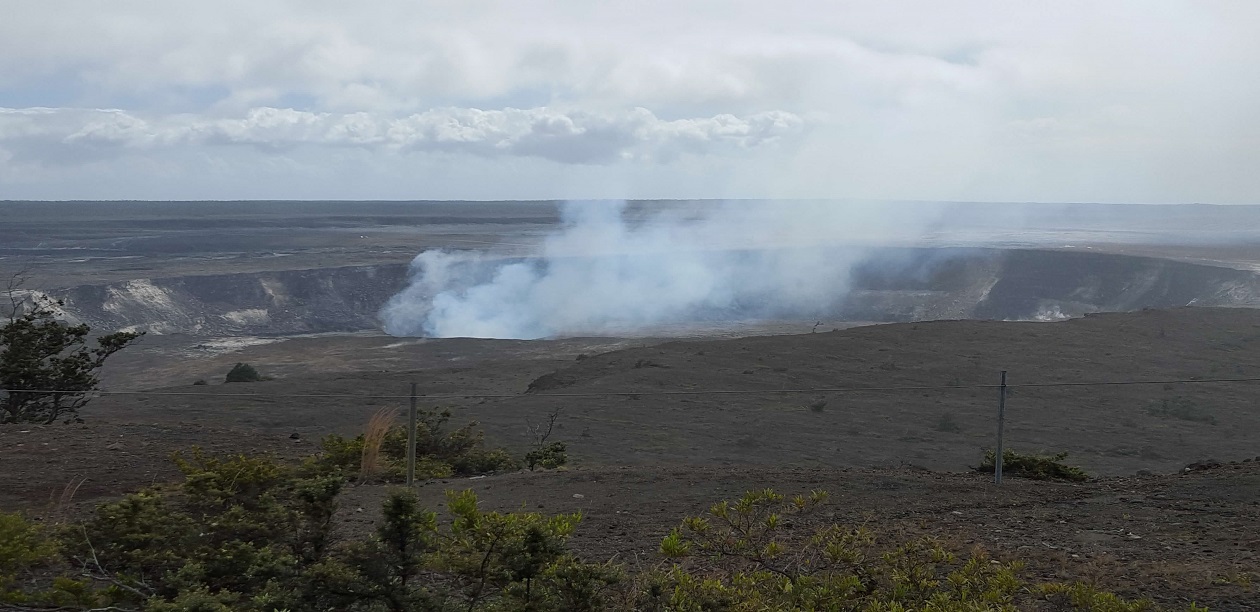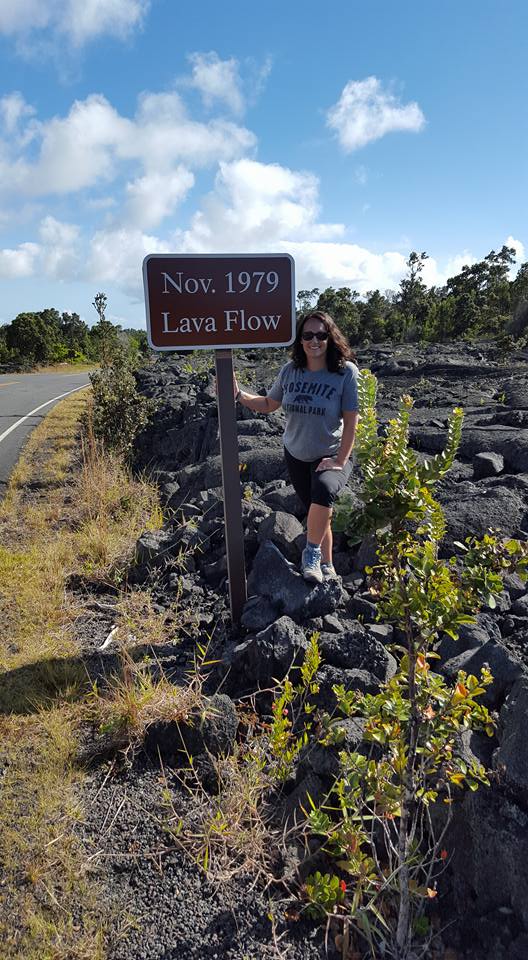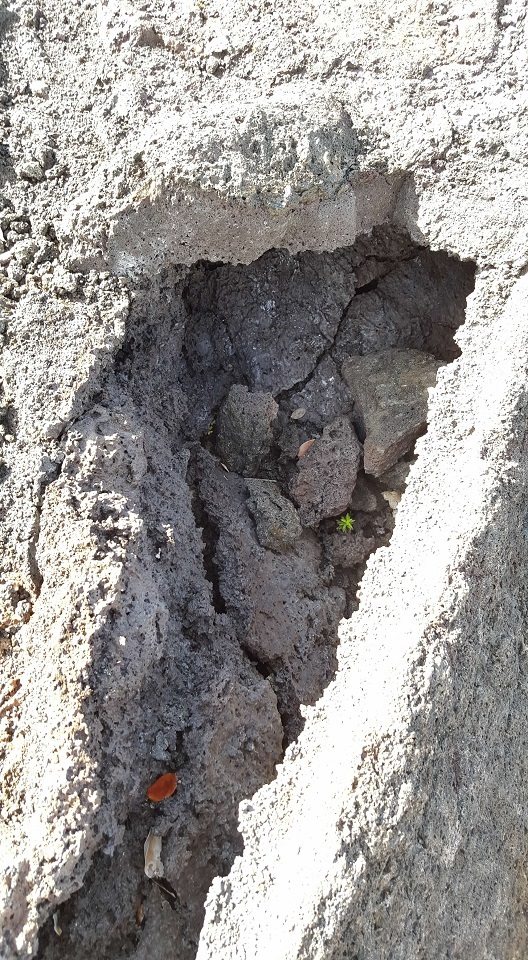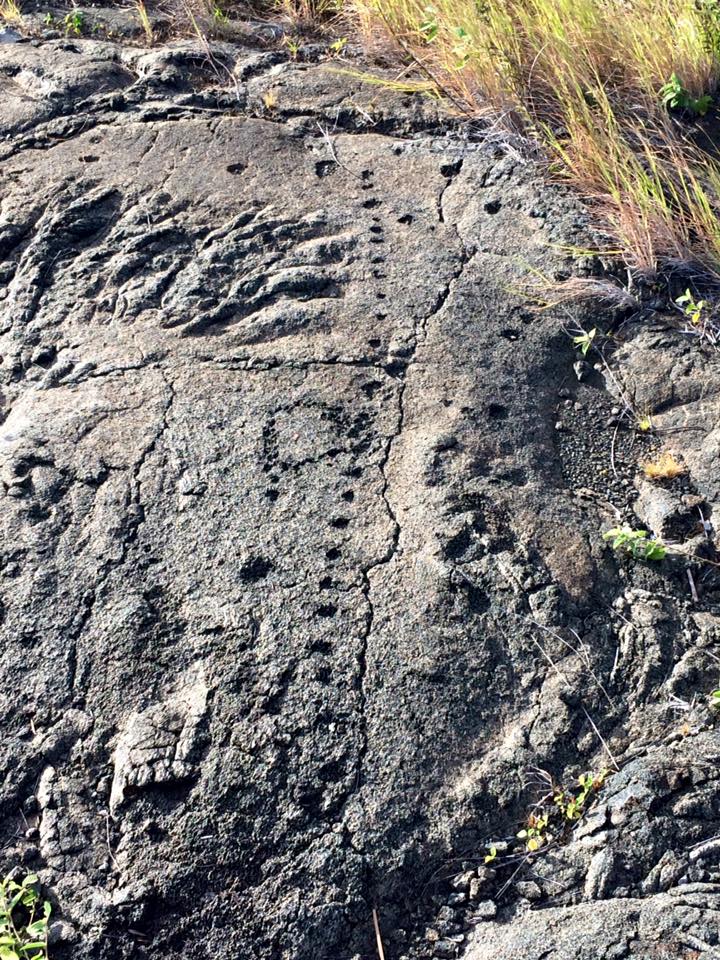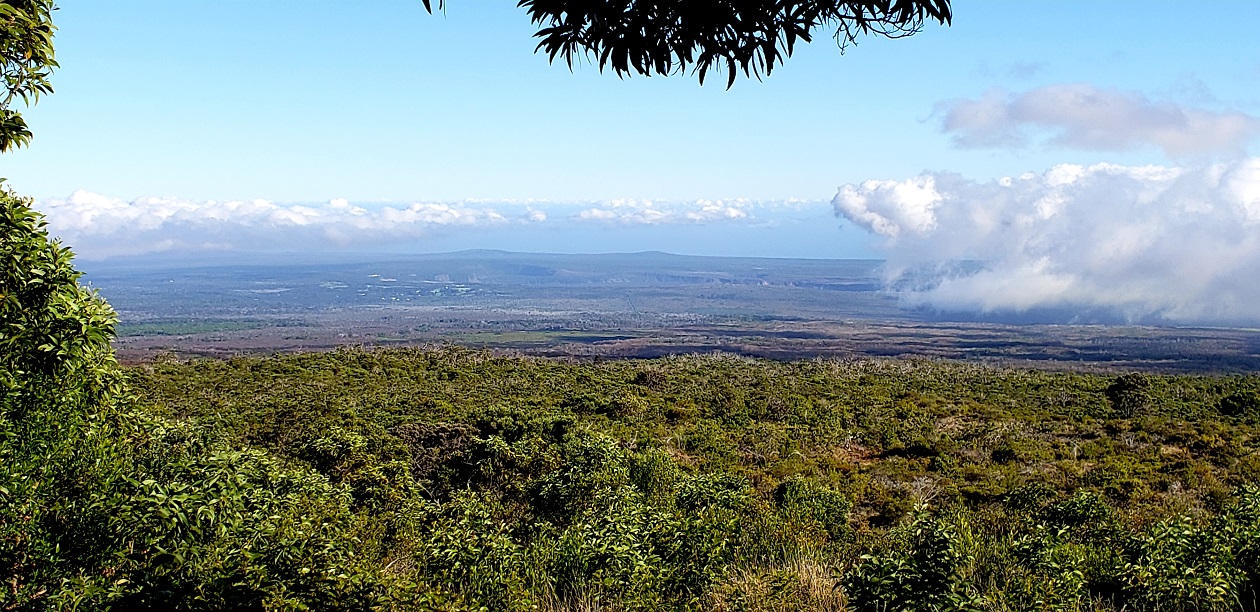Hawaii Volcanoes National Park
As the name implies – this park is focused on volcanoes. The park actually extends from the Pacific Ocean all the way to a peak of almost 13,700 feet and includes two of the most active volcanoes in the world today – Kilauea and Mauna Loa. Eruptions happen frequently here – perhaps none more obvious than the Summer of 2018 when Kilauea was on the evening news every night as lava flowed out destroying many homes along the way. This also changed the park in a big way as visitors no longer see the glow of lava at night in the Kilauea Crater near the visitor center. The crater has dropped thousands of feet and just has a pond of water in it for now. We have visited the park before (2015) and after (2018) the eruption and it is clear the park has been changed forever.
Most Recent Visit
November 2018
When to Go
You can visit here year-round – it’s Hawaii! We have visited in November 2015 and November 2018, and it was amazing weather both times. We don’t think there is a time that is necessarily better than any other time. It is going to be pretty hot and pretty sunny year-round!
How to Get Here
Depending on where you are flying from – you may be able to get a direct flight to Kailua-Kona on the Big Island. However, more likely than not – you will need to fly into Honolulu first and then fly to Kailua-Kona from there. Flights to anywhere in Hawaii are long, but once you are there – you can easily hop island to island in less than an hour. Once you land in Kailua-Kona, you will still have about a 2-hour drive to the park regardless of whether you come in from the north or the south. We would recommend driving one way to the park and taking the other way back effectively forming a loop so that you can see more of this beautiful island.
Trip Length
If you are just here to see the National Park – you only need a couple of days. However, if you have come all this way to get to the Big Island – you probably have other plans besides just the park and you can easily spend a week or more and not get bored. We spent a week in August 2018 and were able to scour the island and see all kinds of sites while also spending time relaxing in Kailua-Kona at several of the bars and breweries in the area.
Where to Stay
We have never had to worry much about this on our Hawaiian vacations as Amanda purchased a timeshare based in Hawaii many years ago. While we can use those points at any member resort in the world – we have found ourselves mostly using them in Hawaii. If you don’t have a timeshare (and we would never recommend purchasing one of these), you will have to deal with some pretty expensive hotels and resorts during your stay. The Big Island certainly has cheaper lodging than Oahu or Maui though which are much more touristy.
What to Do
You should start your visit at the Kilauea Visitor Center where there are several exhibits to look at. You can also talk to a ranger to determine what trails are open at the time of your visit. This was especially needed on our trip in 2018 as the eruptions had just ended and many of the trails were still closed as a result. After you finish your visit here, head over to the Volcano House across the street for a meal which includes an incredible view of the crater through large picture windows. You can also head outside while you wait on your food and snap a few pictures. Once you have had your fill – there are some good hikes in this area that we recommend taking.
Sulphur Banks Trail — 1.2 miles RT, Easy, 45 minutes
You can start this hike right from the visitor center – so no need to move the car! This is an easy walk through a volcanic thermal area and if you don’t like the smell of sulphur – you might think about staying at the restaurant for an extra drink while others in your party head out on the trail. The gases on this trail can get overwhelming and the park actually recommends those with any sort of respiratory disease to stay away. You will eventually come back to the park road and there will be a short spur trail to the Steam Vents which are close by. After a stop there, you will walk back to the visitor center along the crater rim which will offer the chance for some good photos as well.
Halemaumau Trail — 0.8 miles RT, Moderate, 45 minutes
We were not able to take this trail on either of our trips – but if you have the chance – do it! It also takes off from the Volcano House area. You hike down over 400 feet through a rain forest which has to re-establish itself after each eruption. You will eventually come come to a panoramic view of the Kilauea Crater. We will definitely take this hike when we return if it is open.
Kilauea Iki Trail — 4.0 miles RT, Moderate, 2.5 hours
You’ll have to drive down the park road a little bit to get to this one. This is another trail we have heard all kinds of good things about, but we have not yet been able to take it. On our first trip – we couldn’t find parking and it was closed on our second trip. This is a challenging hike and you can actually start it from three different spots in the park – so consider your options here. You will get to walk over the hardened lava lake that drove the 1959 eruption which is really cool. Try to get to this trailhead early in the day to beat the crowds.
Nahuku Thurston Lava Tube Trail — 1.5 miles RT, Moderate, 1 hour
How many places do you get to walk through a lava tube? This is a pretty cool experience through the 500-year-old tube. As you walk through it, imagine lava at over 2,000 degrees flowing through it. That is not an experience you would want to be having! Part of the hike will also be through the surrounding rainforest.
Devastation Trail — 1.0 miles RT, Easy, 30 minutes
You can take this trail from two different parking lots – so there are options if you have trouble finding a spot. This is a paved trail and is a super easy walk through an area “devastated” by the 1959 eruptions. Eventually life will return this area, but for now it is just covered in cinder as far as you can see with a few trees which have started to grow sprinkled around.
From here, you are going to turn on the “Chain of Craters Road” which stretches about 19 miles these days and takes you down to the coastline. There will be a few hikes and overlooks to stop at along the way – but mainly just take in the various lava flows through the years all of which will be marked with signs. We highly recommend stopping at some of these and getting out to walk on the lava flows as you won’t get the opportunity to do that at many places in the world. These flows have covered the road at times and the end of the road is sooner than it used to be due to lava flows from 1983 to 2018 covering the road on the way to the ocean.
There are a couple of stops outside the various overlooks that we recommend stopping at:
Pu’u Loa Petroglyphs Trail — 1.4 miles RT, Moderate, 1 hour
This trail will take you over more lava flows which are over 500 years old and you will eventually come to a boardwalk where you will be able to view some of the 23,000 petroglyphs in this area which is really cool. All of the sketches are simple – people, turtles, etc., but it will take you back in time to those that use to traverse this land before us. And it doesn’t hurt to have views of the lava fields for the entire hike!
Your final stop is at the very end of the road. There will be a viewing area overlooking the ocean, which is cool enough, but down by the water is also the Holei Sea Arch which will have waves crashing into it. This is a great way to end your time on Chain of Craters Road before heading back up towards the visitor center. It should also be noted that even though the road closes here, you can still walk along the coast over where the road used to continue on. This will take you over much more recent lava fields which is also an awesome experience.
You are not done yet though! Once you get back to the highway by the visitor center – take a left and you will come across the Mauna Loa Road pretty quickly on your right. Once you are on this road, there will be a turn off to the right which will take you to a short walk where you will see many tree molds which have been cemented in time by the lava flows.
After you are done here – get back to Mauna Loa Road and continue on up to the overlook where the road will end. It is about 12 miles up to the top and it is a very narrow gravel road most of the way – so keep that in mind depending on the type of vehicle you have. We had a jeep which was easily able to traverse the road to the top which offered incredible views of the park below including the Kilauea Crater.
Once you are done at the overlook, you will drive back down to the highway and there is still another area of the park you can hit on your way back to Kailua-Kona (via the southern route). It is the Kahuku Unit of the park and is about 40 minutes away from the main section of the park you have spent all your time at so far. We actually have never been into this part of the park as it is only open for limited hours each day and has been closed by the time we drove by it both times. There are several short hikes/walks here and if it happens to be open when you are passing by – try to check it out.





